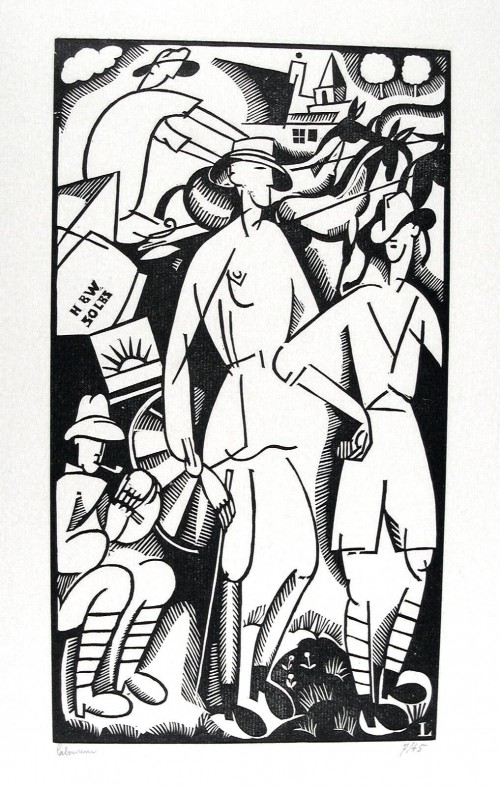Anzacs

Jean-Emile Laboureur, Anzacs, woodcut, 1918-22, signed and numbered (7/45), the second state (of 2). Reference: Sylvain Laboureur 713. In good condition, with remains of old hinges at left margin, a fold at bottom margin edge, archival matting. Plate 10 x 5 1/2 inches, the sheet 17 x 9 1/4 inches.
A clean, bright impression, made in 1918 (a few proofs printed at that time; the edition printed a bit later) just as Laboureur’s singular approach to cubism was emerging. ANZACs stands for Australian New Zealand Army Corps (in France during WWI). On laid paper, with an MBM watermark.
Jean-Emile Laboureur was born in Nantes in 1877. He traveled to Paris in 1895 intending to study law at the Sorbonne, but found himself drawn to the nearby famed Academie Julian, and although he never officially matriculated there, he became immersed in the Parisian art scene.
The great wood engraver Auguste Lepere taught him woodcutting, which initiated Laboureur in an involvement in printmaking that would extend through his career. In 1886 he met Toulouse Lautrec, who influenced Laboureur’s emerging aesthetic style, as did the work of Odilon Redon, Bonnard, and perhaps most notably Felix Vallotton, who became a close colleague, and whose woodcut work often bears a close relationship to Laboureur’s. Laboureur traveled widely, staying for periods in the US and London, and studying classic art and printmaking in Italy and Germany. Although he had moved back to Paris by 1910, a time when analytical cubism was emerging in the work of Picasso and Braque, he continued working in an abstract, modernist mode, waiting until about 1913 or shortly thereafter to invent a cubist idiom all his own.
ANZACS shows Laboureur working confidently, and successfully, within a cubist idiom.
We maintain a large inventory of Laboureur prints; your inquiries are always welcome.
$900